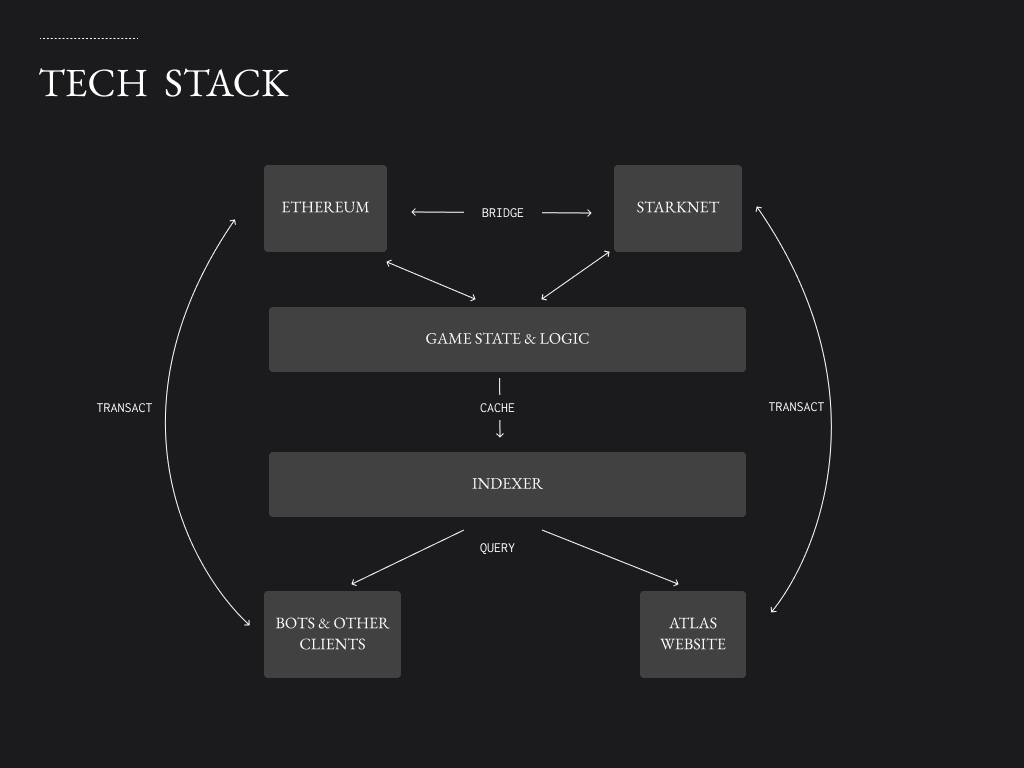Overview & Keypoints
The Stack - Why on-chain?
The technology stack is designed to take advantage of StarkNets ability to facilitate composability between smart contracts. By pushing all logic and state on-chain we can create on-chain worlds that are both open and composable.

The technology stack includes languages such as Solidity, Cairo, React, GraphQL, Typescript to create all game state and logic on-chain, then cache it in a performant indexer which can be queried by any frontend application - such as the Atlas website or a developer creating an automated bot. The DAO provides opportunities for contribution from both within and external sources. If you'd like to learn more about how to contribute, get in contact on our Discord (opens in a new tab) or Github (opens in a new tab).
StarkNet
StarkNet is a revolutionary Ethereum L2, employing STARK validity proofs to deliver an unseen level of scalability and computation on top of the security of the L1 mainnet, at far lower costs. Features such as account abstraction, volitions and recursive scaling (L3) will provide a new paradigm of development allowing for complex gaming experiences to realise a more pure vision of the metaverse.
Module Architecture
Game assets have been conceptualized to enable a modular architecture - leaning in to the blockchain's enabling of the innovative creative space of composability. The separation of various components (e.g Combat System, Building Upgrades, Troops, Resources, Adventurers) enables a new paradigm of interoperability and upgradability. Elements such as the combat module can be extended or modified, e.g. adding some physics based interaction, or integrated with another on-chain games stack. Any party is able to propose a new module to the DAO to be officially adopted (and potentially earn a revenue stream), or permissionlessly create their own experience.